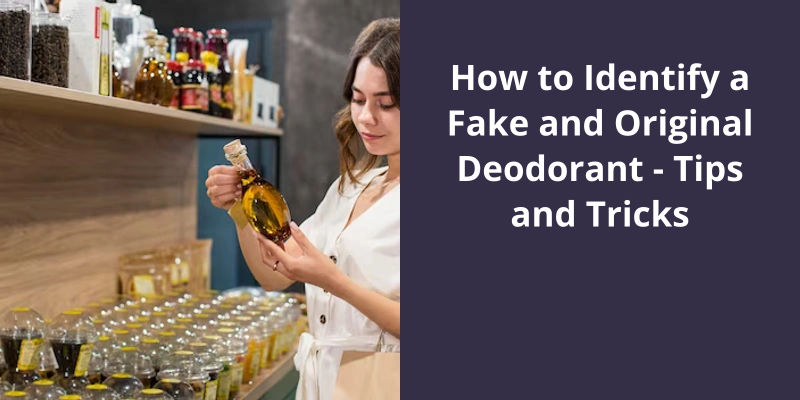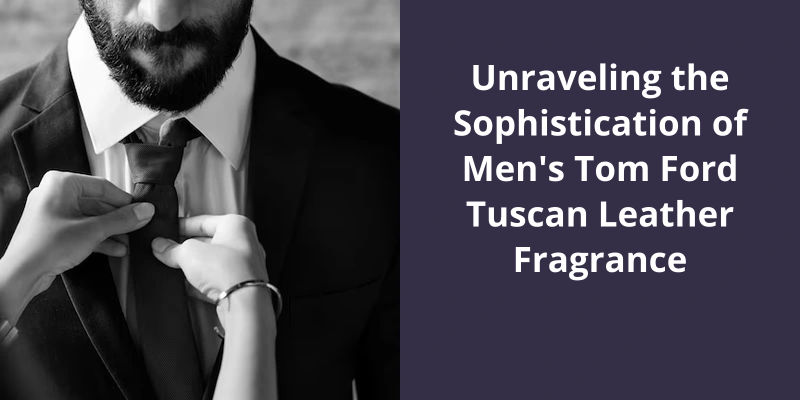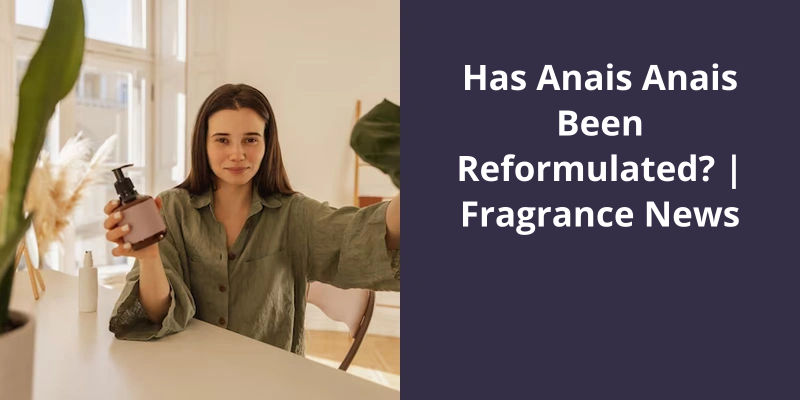Identifying a fake from an original deodorant can be done through keen observation of specific details. First, the packaging details are often a giveaway with genuine deodorants having flawless high-quality containers and printed labels, while the fake ones often have low-quality packaging with noticeable errors and typos. Next, consider the fragrance; an original deodorant often has a long-lasting scent and won’t cause irritation, the fake will not persist as long and could cause skin irritation. Checking the bar code and brand authentication code can also help verify the product’s authenticity since these can be cross-checked on the manufacturer’s official website. Lastly, consider the product’s price. If a deal seems too good to be true, it often is, and that deodorant could very well be a fake. Always purchase from a trusted vendor to ensure the genuineness of the product. Remember, original products prioritize user safety above all.

How Can You Tell if Something Is Counterfeit?
Counterfeit products are becoming increasingly prevalent in todays market, causing harm to both consumers and businesses. One way to tell if something is counterfeit is by examining the manufacturers official site. If you can’t find the identical product on the website, it’s possible that the product could be counterfeit. This is because many counterfeiters will create similar products that appear to be the same as the original, but have slight variations in design or packaging.
Another sign that a product could be counterfeit is differences in design. Counterfeiters will often try to replicate the design of an original product, but may not always be able to get it exactly right. This could result in slight variations in color or shape, indicating that the product isn’t authentic.
Different product descriptions are also a red flag for counterfeit products. For example, counterfeiters may use different names for the product or use incorrect descriptions that don’t accurately describe the product. It’s important to read the product description carefully and compare it to the original product to make sure it’s authentic.
Looking at what materials the product is made from and it’s dimensions is another way to tell if something is counterfeit. Counterfeiters may use cheaper materials or change the dimensions of the product to save on costs. This could result in lower quality products that don’t function as well or don’t fit correctly. It’s important to consider the materials and dimensions of the product when examining whether it’s authentic.
Counterfeiters will often offer products at significantly lower prices than the original product to attract buyers. It’s important to compare the price of the product to similar products on the market to determine whether it’s authentic.
These include: not being able to find the identical product on the manufacturers official site, differences in design, different product descriptions, looking at what materials the product is made from and it’s dimensions, and a significant difference in price. By examining these factors, consumers can protect themselves from counterfeit products and ensure they’re purchasing authentic products that are safe and high quality.
When it comes to purchasing products, it’s important to know whether they’re authentic or not. Counterfeit items are becoming increasingly popular, and it can be challenging to identify them. One simple way to verify whether a product is original or fake is by checking the barcode. If you’re not sure how to do this, read on to find out more.
How I Know My Product Is Original or Fake?
Another way to check if your product is original or fake is to look for the label or packaging. The label should be clear and legible, without any blurry or misspelled words. The packaging should be of good quality, with no signs of wear and tear or damage. If there are any inconsistencies or discrepancies in the label or packaging, chances are it’s a fake.
You can also check the price of the product. If it’s too good to be true, it probably is. If a product is sold at a much lower price than it’s retail value or market price, theres a high chance that it’s a fake or counterfeit product. Try to verify the price with other retailers or sellers to confirm if it’s legitimate or not.
Authentic products are made with high-quality materials and are durable. If the product looks and feels cheap or flimsy, it’s likely to be a fake. Look for signs of poor craftsmanship, like loose threads, uneven stitching, or rough edges, as these are telltale signs of a counterfeit product.
If youre buying a branded product, make sure to check the official website or retailer list to see if the seller is authorized to sell their products. Buying from reputable sources reduces the risk of buying counterfeit products and gives you the guarantee of an original and authentic product.
Finally, do your research. Look for reviews, customer feedback, or ask for recommendations from trusted sources. You can also check online forums or social media groups where people discuss the authenticity of products to get some insights or recommendations. Your research is key to making sure you aren’t scammed while spending your hard-earned money.
Conclusion
In a world where counterfeit products are becoming increasingly common, it’s important to always be aware and vigilant when purchasing even the most everyday items such as deodorants. By being aware of the telltale signs and following common sense precautions, such as avoiding unreal discounts and fake websites, as well as carefully analyzing the packaging, grammar and quality of the product, one can greatly increase their chances of identifying an original from a counterfeit. It’s crucial that customers take the time and effort to stay informed and vigilant when shopping to avoid being taken for a ride by fraudulent sellers seeking to profit from selling fake products. By doing so, you aren’t only protecting yourself from financial losses, but also ensuring that you aren’t unknowingly exposing yourself to harmful ingredients or chemicals that may be present in fake deodorants.





